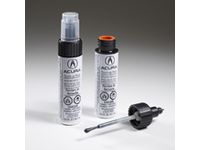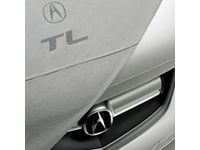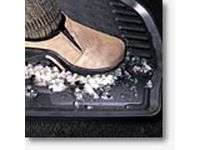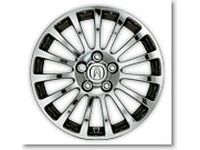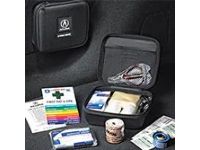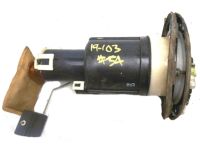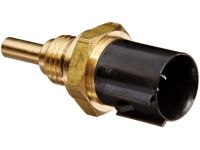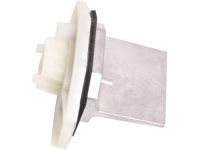- Hello
- Login or Register
- Quick Links
- Live Chat
- Track Order
- Parts Availability
- RMA
- Help Center
- Contact Us
- Shop for
- Acura Parts
- Acura Accessories

Why choose AcuraPartsWarehouse
- Superb Shopping Experience
To keep your car running at peak performance, you need genuine parts from AcuraPartsWarehouse.com. For years, we've been the leading online Acura TL parts store. All purchases through AcuraPartsWarehouse.com are secure as everything is expedited directly from committed dealers and backed by the manufacturer's warranty.
- Optimal Customer Service
What makes AcuraPartsWarehouse.com the best choice for Acura TL OEM parts? Live customer service representatives are standing by to help through email, live chat, or phone calls. Our experienced customer support team strives to provide you with the best possible shopping experience.
- Quick Delivery
Restore your Acura TL to its original condition with ease as all the parts on AcuraPartsWarehouse.com are on hand and ready to ship once your order has been made. You'll receive your order at the doorstep in a matter of days as we deliver from numerous strategic locations across the US.
Popular Genuine Acura TL Parts
- Engine Parts View More >
- Electrical / Exhaust / Heater / Fuel Parts View More >
- Chassis Parts View More >
- Interior / Bumper Parts View More >
- Body / Air Conditioning Parts View More >
- Accessories View More >
Shop Genuine Acura TL Parts with AcuraPartsWarehouse.com
The Acura TL is a luxury executive car manufactured by the Japanese automaker Honda, primarily for the North American market. Launched in 1995 as a replacement for the Acura Vigor, the TL became the division's best-selling model due to its outstanding design, high quality, and premium auto parts. It was badged as the Inspire from 1996 to 2000 and the Saber from 1996 to 2004 for the Japanese market. However, sales declined after 2008, and the TL was eventually replaced by the TLX, alongside the TSX, in 2014. The first-generation Acura TL offered two engine options: a sportier 2.5 L, 176 hp, 5-cylinder engine, and a more luxurious 3.2 L, 200 hp V6 engine. Standard features included dual airbags, automatic climate control, a cassette/CD player sound system, and power windows and locks. In 1997, a power moonroof became a standard addition to all TL models. The second-generation TL, launched in 1998, featured a redesigned 225 hp SOHC VTEC J32 V6 engine and introduced a CD-based navigation system, which eventually evolved into a DVD-based system that covered the entire continental United States. The third generation, released in 2003, was the first car in the American market to have a 6-disc DVD-Audio system, although it could not play MP3s. Notably, the Acura TL boasted an impressive safety record, with the Insurance Institute for Highway Safety finding it had the second-lowest fatality rate among midsize luxury cars. The TL's excellent security performance, high-quality auto parts, and stylish exterior made it a popular choice in the luxury car segment.
The Acura TL, a mid-size luxury car, experiences common problems due to its pursuit of high performance. One such issue is excessive oil consumption, which is common in luxury cars. Acura TL owners report decreased engine performance, poor gas mileage, overheating, strange noises, dropping oil pressure, and misfiring, as well as visible oil leaks in front of the motor. To address this, inspect the oil filter, oil pressure switch, timing belt, A/C idler pulley, radiator, radiator hose, fan motor, and water pump. Another issue is the braking system, which requires frequent brake pad replacements due to wear speed being linked to usage. Additionally, the wiper blade is essential for visibility but tends to wear easily, so ensure the wiper arm and blade are in good condition. A properly functioning cabin air filter is crucial for fresh, healthy air, and for Acura TL fans, the emblem is a favorite part that may need attention as well.
Every OEM component is subjected to rigorous quality checks, assuring its safety, resilience, and performance that aligns with your original parts. Welcome to our website where you can procure brand new OEM Acura TL parts, such as Transmission - Automatic, Transmission - Manual. We boast a wide array of genuine Acura TL parts at the most competitive prices. If you're seeking a combination of quality, reliability, durability, and affordability, you've come to the right place. All our parts are backed by a manufacturer's warranty for your peace of mind.
Acura TL Parts Questions & Answers
- Q: How to verify fuel tank and fuel pump operation in Acura TL?A: To inspect fuel levels and pump operation, turn the ignition ON and listen for a noise. If inaudible, listen at the fuel filler neck with an assistant. For 2003 and earlier models, use a fuel pressure gauge with 48 psi for 1999-2000 models, and 55 psi for later models. Detach the fuel rail's pulsation damper, link your fuel pressure testing kit, and attach the gauge. Then, start the engine, warm it up, and then look over the fuel pressure against the range with the vacuum hose connected and disconnected and if the pressure doesn't change with hose manipulation, check for hose or regulator faults.
- Q: How to check and replace the Coolant Temperature Sensor on Acura TL?A: The temperature gauge relies on a sending unit in the engine's water passage. If the gauge reads HOT on a cold engine, check for a short circuit in the wiring. If the engine is warm but the gauge reads COLD, test the gauge by grounding the wire to the sending unit with the ignition On and engine OFF. To test the unit, disconnect the connector and use an ohmmeter from the sender's pin to an engine ground. Apply conductive sealant on the threads of the new unit, not Teflon tape. Disconnect the connector, replace the unit quickly, reconnect the connector, and test the gauge.
- Q: How Do I Access and Replace Blower Motor and Blower Motor Resistor in the Acura TL?A: Begin by removing the insulating cover under the glove box to access the passenger compartment. Disconnect the blower motor resistor's connector, unscrew the screws, and take out the resistor. For the blower motor, unplug its connector and remove the assembly by removing the screws. Remove the circlip to release the fan. To reinstall, switch the removal steps going from the final step to the beginning step.
















































